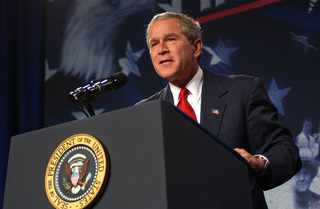Twenty years ago, in a huge ceremony at DAR Constitution Hall near the White House, President George W. Bush signed into law the Medicare Modernization Act, creating Health Savings Accounts and other new health programs that put power in the hands of consumers instead of government.
The MMA created a tax break for working Americans to save for their health care expenses and gave seniors new options to get coordinated medical care and a drug benefit that allowed them to choose plans that meet their individual needs for coverage.
All three programs have been hugely successful:
- More than 34 million Americans now have a Health Savings Account, with an average balance of more than $3,000 and total in deposits and investment gains of $142 billion.
- More than 31 million seniors have voluntarily enrolled in a Medicare Advantage (MA) plan—more than half of eligible seniors—and the average senior has 43 plans to choose from. More than 94% are satisfied with their coverage.
- And the Medicare Prescription Drug benefit also has proven the value of competition and choice, with 91% of beneficiaries satisfied with their current coverage and costs coming in vastly below projections.
All three of these programs adopted a unique strategy of giving consumers control over choices and forcing plans to compete in meeting their demands for affordable care and coverage.
The market response was far beyond expectations. For example, less than a month after the bill was signed, the first Health Savings Account was sold by Fortis. Today, millions of people now are saving billions of dollars that otherwise would have gone to health insurance premiums or not saved at all.
When the prescription drug benefit was first launched in 2006, competition was so fierce for enrollees that one plan offered coverage with a premiums of $1.84 a month. Today, some seniors receive their coverage for free as part of their MA plan. And taxpayer spending on the drug benefit is far below expectations, saving seniors and taxpayer money by forcing private plans to compete on price and benefits.
The other side continues to try to undermine these consumer-friendly programs with distorted studies and legislative sabotage.
But pro-consumer advocates are undaunted. A number of colleagues are offering ideas to further expand consumer-friendly options and programs. Here are two of many examples:
- The important peer-reviewed book, Modernizing Medicare: Harnessing the power of consumer choice and market competition, offers a better way to save Medicare.
- And many of our colleagues are working on modernizing existing programs. Hoover scholar Lanhee Chen has joined with colleagues Tom Church and Daniel Heil to propose a new tax-advantaged savings vehicle called individual health accounts. IHAs would plan offer greater flexibility and more widespread appeal for the already popular HSA accounts.
Lanhee cites studies that show that HSAs along with other consumer-directed health plans have reduced health spending, driven by lower consumption of pharmaceuticals and outpatient services. And HSAs are especially popular with middle-income workers who see the savings advantages.
Consumer choice and competition have been proven to work for health coverage. The challenge to Congress and the next president is to continue to build on this infrastructure of success.
Grace-Marie Turner heads the Galen Institute that works tirelessly to put doctors and consumers at the forefront of decision making in the health sector. gracemarie@galen.org or @gracemarietweet





